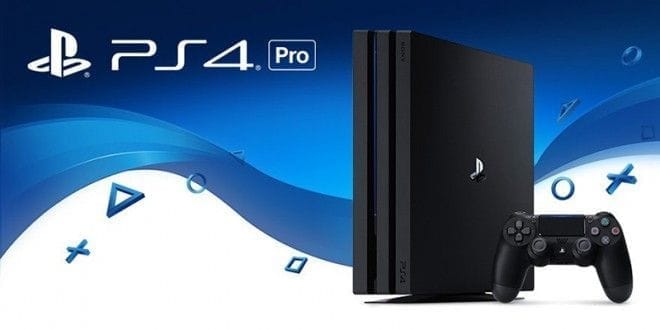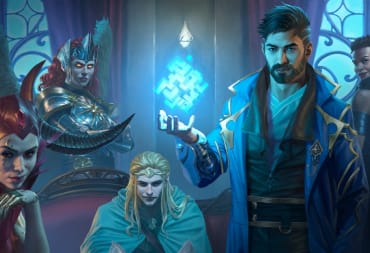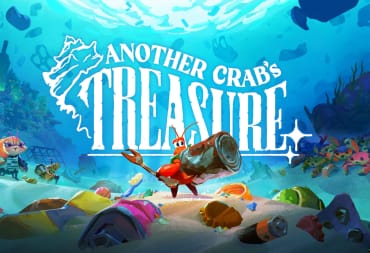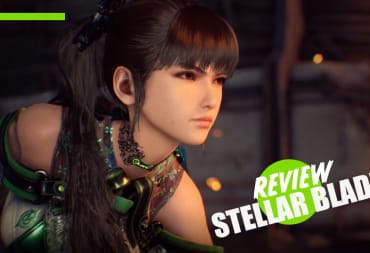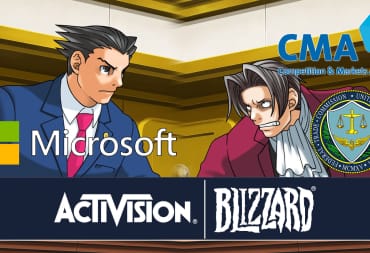From a pop culture presence that is undeniable in its visibility to the prevailing relevancy of their existence, consoles are a part of the tapestry of gaming culture, woven into the fabric of its very existence as a hobby and pastime. Of course, this is much to the chagrin of the “PC Master Race,” who have formed a subculture onto itself in the gaming world, one of oftentimes self-sufficient smugness against other members of the hobby.
There is a certain charm to that though. PC players wear the demeaning moniker as a badge of pride for a reason: they are more self-sufficient than most in terms of video games. What do I mean by this? Well, consider the fact that PC gaming is based on the technical specifications of your computer, combined with the ingenuity and ability to upgrade said computers for higher performance and graphical fidelity beyond what even developers have imagined. Add mod capability and you have limitless content and a technical know-how that is often beyond the scope of most game players; PC gaming is an apex part of the hobby.
It is easy to respect PC gaming for that contribution, but for the general audience, there is simply no time or technical skill to invest so heavily into the hobby. Much like restoring cars, it involves a do-it-yourself understanding that only enthusiastic amateurs would strive for, and the immediacy of a console is a good remedy to that problem—why worry about technical details when manufacturers build it for you?
Console gaming is often stuck in a loop like this, where we see technical upgrades to consoles mid-generation that serve as upgrades to increase longevity, and it is often a mixed bag of technical problems and limitations. The PlayStation 4 Pro, for example, is being touted as going after the PC market in this way, despite the fact that PS4 is essentially a downgraded PC in its own right. It contains all the bells and whistles of a modern console, an upscaled HD 1080p operating system for most TVs, smooth 30FPS when for PC gaming it can be pushed to 60, and graphical fidelity that only a select number of people care about. It is the relative stability of the PS4 that makes the system attractive to players and developers, who often botch PC ports, such as Arkham Knight, heavily due to the focus on meeting console specifications.
https://www.youtube.com/watch?v=vbYkgDWAYAE
The PlayStation 4 Pro is just another console in the long line of upgrades we have seen throughout the history of video games. Take, for example, the Sega 32x. Sega touted the 32x as an add-on, low-cost way to play 32-bit games on the Sega Genesis at a time where the bit wars were reaching their next logical step of three-dimensional gaming. Originally, the plan was to make the 32x an entirely new console, but Sega of America R&D head Joe Miller suggested it be an add-on instead, creating a stop-gap between 16-bit gameplay and 32-bit processing power.
The 32x was a response to Atari and their upcoming console system, the Jaguar, which would be lauded as an abject failure of a system in the long run. The 32x didn’t fare as well either, although not from a consumer perspective at first. The add-on was an inexpensive alternative to graphical processing, and matched the Jaguar, for the most part, in graphical prowess and clarity. The Achilles' heel was developers in the long run, who didn’t focus on the 32x. Instead, most companies switched to two new consoles, the Sega Saturn and the Sony PlayStation, which were in turn designed to take full advantage of the processing power the 32x imitated.
The 32x, much like many consoles that served to be upgrades, are cautionary tales of what not to do when it comes to hardware development. The Nintendo 64DD, for example, was a complete failure and resource sink. It added needed features sorely missing in the standard Nintendo 64, more efficient storage, a real-time clock and full 64MB capacity for games. Developers figuring out how to program for the standard system, as well as the creation of the Nintendo 64 Expansion Pack, led to many DD games ultimately being cancelled or released as standard cartridges.
https://www.youtube.com/watch?v=V6UnEPO09Yw
Interestingly enough, the 64DD was designed to be more “PC” like than most consoles at the time. The 64DD would have included a modem cartridge and featured a line of peripherals to turn the console, and a subsequent TV, into a makeshift computer. Most of this stems from Nintendo’s partnership with Randnet after dissolving their previous online partner St.GIGA, famous for releasing online content for the Super Famicom under Stellaview Online in Japan. The service with Randnet included a modem, 4MB expansion pack, and disk package, which would allow users to surf the Internet, use online message boards by Nintendo, create custom avatars, and chat swapping with other community members.
In some ways, Randnet, despite its failure in 2000, survives to this day in the form of the Nintendo Wifi network of 2016. The connectivity of the Nintendo systems has become a mixed bag because of the near total control Nintendo has over their Internet space, which in turn has alienated a lot of third party developers from their consoles. Nintendo’s own Internet ecosystem is probably as close as consoles will come to imitating a controlled sliver of the world wide web in 2016, but its lack of power and total control hold it back from being truly influential.
While these examples are big ticket items that show the pitfalls of extending console life through new tech specs, it is practically normal in the console lifecycle to see upgrades. These upgrades are not the same as a “PS Slim” design mind you; the PS Slims of the world are just a different shell with the same processing power. Rather, the upgrades are designed to move older hardware into future generations. Consoles, unlike the PC market, are shackled by their generation. Based on technical limitations and general life cycle of the systems, a console generation is the shorthand lexicon gamers use to categorize the prominence of systems, and for the most part it works well as a roadmap for their heyday and technical specifications.
Add-ons and upgrades like the 32x and the N64DD try to go beyond the lifespan of a console in more than a cosmetic re-design; they try to push it forward a second generation. In the end, this rarely worked because the technical limitations of a console could simply not compete at times with the functionality and ease needed for smooth transitions. In 2016, however, that rule of thumb may be changing.
https://www.youtube.com/watch?v=573ogiMXmD0
Take the New Nintendo 3DS, which is a technical upgrade of the 3DS hardware to include stronger processing power for Nintendo Amiibo play. This includes internal processing changes to a 256 MB processor, micro-SD cards for storage, and changes to the autostereoscopic 3D effects. The major drawback was games exclusively used for the New 3DS, including a much-touted port of the Wii game Xenoblade Chronicles 3D, and even new modes for older titles, including “perfect pixel mode” for SNES ports that allows the games to play on their original aspect ratio.
Despite the missteps with the N64DD nearly a generation ago, the 2014 release of the New 3DS was a technical upgrade that works. Instead of increasing longevity beyond a console generation, it improves the current one to allow for more graphically intensive games to function properly on the system. It also gives a change to increase the power and presentation of the handheld for players who may be looking for an upgrade, or simply looking to buy it for the first time. The New 3DS is a wise marketing move by Nintendo; it keeps their handheld relevant and ahead of the competition, while simultaneously improving on aspects of what make the handheld unique in the first place, and does this without focusing on a transitional period for this generation.
Sony is currently attempting to do the same thing with PlayStation 4 Pro, offering a significant upgrade for the PS4 in terms of GPU size with a Radeon-based 4.20-TFLOPS, doubled storage capacity, and the promise of 4K graphical presentation. Future games, such as Call of Duty and Horizon: Zero Dawn, will also take advantage of the graphical upgrades fully, while other games will get patches to show improved performance. The trick to this, though, is Sony is making sure such games will still be usable on the standard PS4, which means the graphical presentation is not fully 4K but is using its processors to mimic the graphical look of 4K.
Does this make the Pro worth it? Much like the New Nintendo 3DS, or the upcoming, mysterious Xbox Scorpio, it ultimately depends on the player. Patching old games for a graphical upgrade on a system capable of showcasing such graphics on TVs that few have, may seem like a hard price to swallow as a consumer. Sony is marketing to PC gamers in this way: it’s the technical prowess of the system that is on display, and while it’s not truly as powerful as a PC gamer's rig, it’s currently the closest option for the gaming layman to enjoy. That line is enticing to many consumers, who simply lack the time or technical skill to craft their own gaming rigs or navigate the hours of technical jargon PC players use to describe their hobby.
If nothing else, the PlayStation 4 Pro is another example of console gaming continuing a trend we have seen for years now. The mistakes made in the past can doom a system like the PS Pro, although the lessening importance of graphical jumps between console generations is a factor in its favor. Whether the PS Pro is successful or not is dependent on how many players elect to adopt it. Those in the know will likely be underwhelmed by the system, but those who always hoped their consoles could match the graphical prowess of a mid-end PC gaming rig are now a step closer to achieving that dream. The line between console and PC will always exist, but the line between their distinctiveness is growing shorter as time goes forward.
Have a tip, or want to point out something we missed? Leave a Comment or e-mail us at tips@techraptor.net
